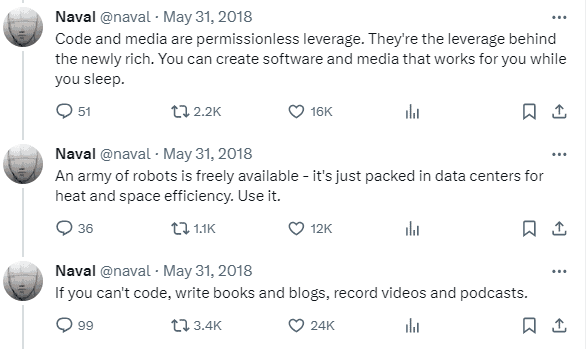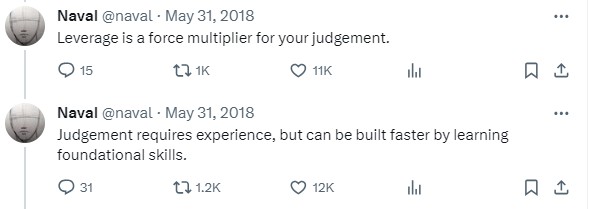Understanding leverage is crucial to business success. But few people study it. Let’s explore the fundamentals of modern leverage. We’ll look at the kinds we commonly see. Then, we’ll review questions I ask myself to help calibrate whether I am thinking about leverage well.
Lean and Six Sigma often come down to getting the most return on your actions. Leverage involves using resources to maximize impact. Lean and Six Sigma aim to optimize processes. This way, they achieve the highest possible return on actions.

What is Leverage?

Give me a lever long enough, and a place to stand, and I will move the world.
Archimedes
Let’s define leverage as strategically using resources and efforts to achieve maximum impact and efficiency. It involves finding and using key influence points in a system or process. You amplify the good outcomes and cut back on waste. In this context, leverage means to optimize and magnify actions. This results in a higher return on investment and a more streamlined, high-performance organization.
Leverage is a Great Equalizer
Leverage is often considered a great equalizer because it has the transformative power to level the playing field and create parity. Think of martial arts like jiu-jitsu, wrestling, judo, and other grappling systems. Using physical leverage, it’s common for a better training yet much smaller opponent to overpower a larger, stronger opponent.
In the context of organizational processes, methodologies like Lean and Six Sigma can provide that leverage.
Why Six Sigma Practitioners Care about the Fundamentals of Modern Leverage
Six Sigma exists only to improve the bottom line financials for a company.
The Six Sigma champions and other stakeholders of your Six Sigma projects don’t always speak the language of process improvement; that’s why they have you!
This means that we must learn to speak our stakeholder’s language.
You are likely personally interested in Six Sigma and its potential to improve your career and quality of life.
Understanding leverage helps us communicate effectively with our stakeholders, better understand them, and propose the best solutions for them. Understanding leverage also gives us the best possible chance for success in our own lives. However, we choose to define that success.
The Fundamentals of Modern Leverage (According to Naval)
Naval Ravikant is an entrepreneur (co-founder of Epinions, CEO & co-founder of AngelList), author, and angel investor. He became well-known for his insights on starting businesses, self-improvement, and mindfulness.
He explores leverage (and other topics) in his widely popular Twitter thread on wealth creation, “How to Get Rich (without getting lucky).”
Permission Leverage

Permission leverage is about recognizing and embracing the opportunities provided by the decentralized and interconnected nature of the modern world.
The idea revolves around the traditional model of seeking permission or validation from others, such as employers or gatekeepers, to pursue one’s goals.
There are two types of Permission Leverage: Labor Leverage and Capital Leverage.
Labor Leverage

Labor leverage involves skillfully orchestrating people to get the best outcomes. It emphasizes the trade of time for pay.
As a manager, labor leverage involves hiring individuals to work for your company. Recently, the paradigm has evolved. You can boost labor leverage by hiring contractors through platforms like Upwork. This lets you benefit from geo-arbitrage and often gain fiscal flexibility. This approach goes beyond the usual employment model. It focuses on making work better and more efficient. This drives success and competitiveness in a fast-changing business world.
On an individual level, it could manifest as the traditional model where you, as a contributor, trade your hours for income. But even as individuals, we can leverage labor by retaining specialized services, such as hiring a babysitter, a meal service like Factor, or a gardener to handle specific tasks on our behalf.
Capital Leverage
Capital leverage is the strategic use of financial resources to maximize their impact and increase wealth. Think of it as moving your money around smartly to get the best advantage. For instance, currency traders might shift their money in and out of positions to take advantage of changes in exchange rates. Or, options traders may take a position on the margin to gain Capital leverage using other people’s money.
Similarly, big companies move large amounts of money globally, exploring opportunities to earn incremental interest points on their stockpiles. This process is a bit like playing a financial chess game, where you aim to make your money work for you.
Capital leverage also involves various kinds of arbitrage, where you exploit price differences to make a profit. So, by using your money wisely and navigating the financial landscape, you can grow your wealth strategically and make your capital work for you.
Over the last 100 years, we’ve seen massive wealth amassed by people who mastered Capital Leverage. The difficulty is that capital in large sums is difficult to come by, and it requires permission from others to use it.
Permissionless Leverage

Permissionless leverage is about achieving goals without waiting for someone else’s approval. It’s like taking charge and making things happen on your own terms. Instead of seeking permission, you can use the tools and opportunities available to create and share your ideas or start something new. For example, imagine you have a talent or passion, like making videos.
With permissionless leverage, you don’t need to wait for a big company to give you a job; you can use platforms like YouTube to share your videos with the world. It’s all about taking initiative, using the internet, and making your own way without waiting for someone else to say “yes.” Permissionless leverage empowers you to be the driver of your own success and to create opportunities without having to ask for permission first.
Permissionless Leverage is possible because modern technology allows you to build something easily scalable with little to no effort and cost, especially when compared to Permission-based leverage.
Introducing The Fundamentals of Modern Process Leverage (aka What Does This Leverage Stuff Mean For Us?)
Naval emphasizes the importance of breaking away from this conventional approach and leveraging the modern, decentralized world to create opportunities without waiting for permission.

While Naval doesn’t explicitly mention it, I argue that better processes, mental models, and better systems are additional forms of permissionless leverage. A better process can often be implemented with zero negligible marginal costs. A better process can amplify whatever assets you have on hand to produce outsized results.
Here are Six Prompts that Help Me Think About The Fundamentals of Modern Process Leverage
Efficiency Optimization for All Sizes: Process Leverage allows organizations of various sizes to optimize their efficiency. Small organizations can leverage their resources effectively to compete with larger counterparts. It enables them to achieve a comparable level of output and impact without the need for the extensive resources often available to larger entities. Think process performance metrics.
Focused Impact on Core Processes: Process Leverage encourages a focused approach to core processes. Regardless of the organization’s size, strategically applying leverage to key areas makes it possible to maximize impact where it matters most. This enables organizations to concentrate efforts on critical aspects, enhancing their competitiveness. Think Pareto’s law.
Resource Optimization: Leverage involves using resources judiciously. This means that organizations can make the most of their available resources regardless of their scale. It’s not always about having more resources but about using them intelligently, and organizations of varying sizes can apply this principle.
Adaptability and Agility: Leverage fosters adaptability and agility. Smaller organizations can leverage their flexibility to respond swiftly to changes in the market or industry. This adaptability becomes a competitive advantage, allowing them to navigate challenges effectively. Porter’s Five Forces is a great framework for thinking strategically here.
Continuous Improvement: Leverage is closely aligned with continuous improvement methodologies like Kaizen. Organizations committed to ongoing refinement and optimization can leverage their commitment to stay ahead. This creates a culture where all organizations, irrespective of size, can compete based on their dedication to improvement.
Innovation and Creativity: Leverage encourages innovative thinking. It’s not just about doing more with less; it’s also about finding creative solutions and innovative approaches to challenges. (E.g., TRIZ and Design for Six Sigma) This innovation mindset can level the playing field for organizations willing to think differently.
Closing
Our exploration into leverage has uncovered the magic that turns efficiency into excellence. As we close this chapter, consider how this knowledge can revolutionize your approach to Lean and Six Sigma. Leverage isn’t just a concept; it’s your ticket to unparalleled success. Continue the journey, absorb the insights, and let the power of leverage propel you toward a future of optimized actions and higher returns.
When you’re ready, there are a few ways I can help:
First, join 30,000+ other Six Sigma professionals by subscribing to my email newsletter. A short read every Monday to start your work week off correctly. Always free.
—
If you’re looking to pass your Six Sigma Green Belt or Black Belt exams, I’d recommend starting with my affordable study guide:
1)→ 🟢Pass Your Six Sigma Green Belt
2)→ ⚫Pass Your Six Sigma Black Belt
You’ve spent so much effort learning Lean Six Sigma. Why leave passing your certification exam up to chance? This comprehensive study guide offers 1,000+ exam-like questions for Green Belts (2,000+ for Black Belts) with full answer walkthroughs, access to instructors, detailed study material, and more.

